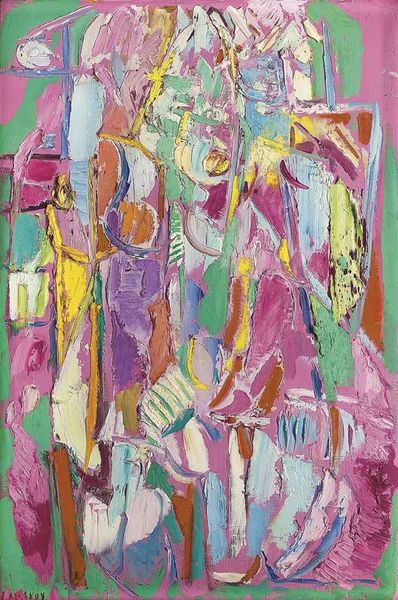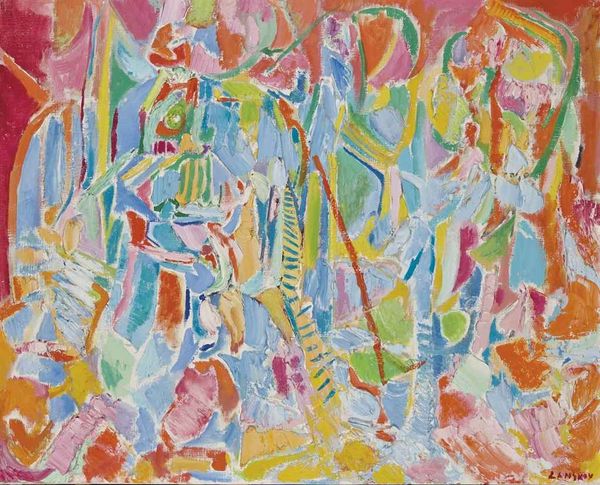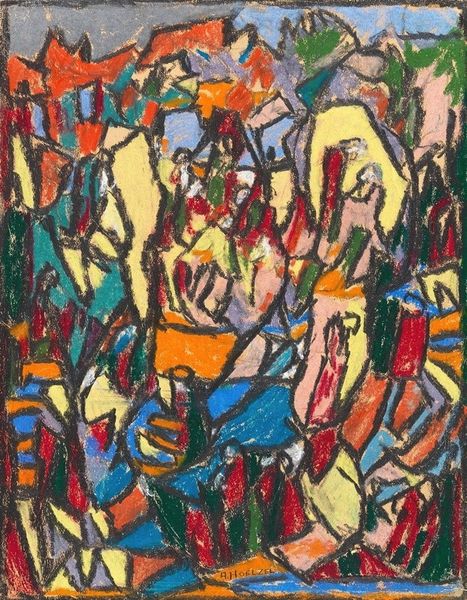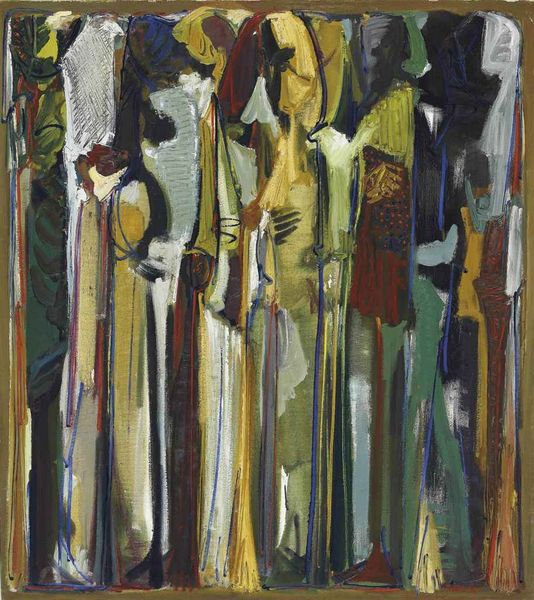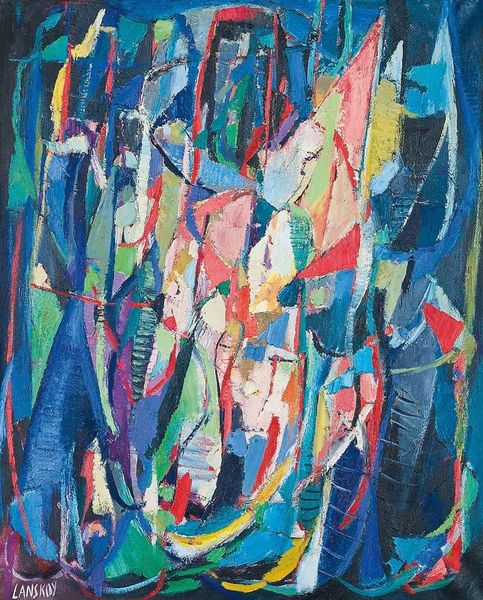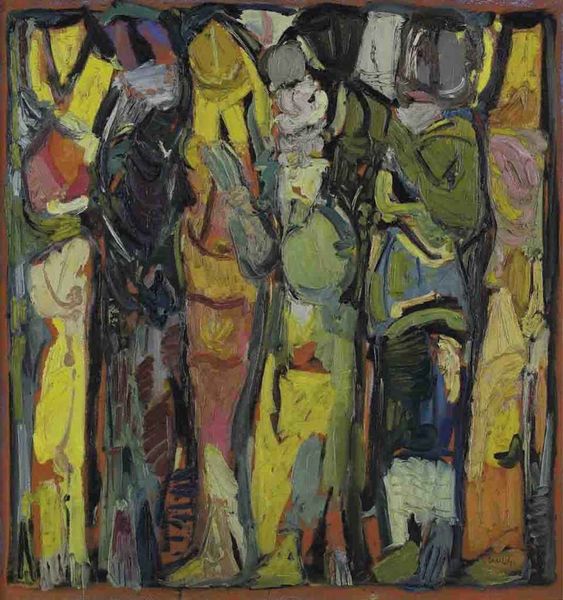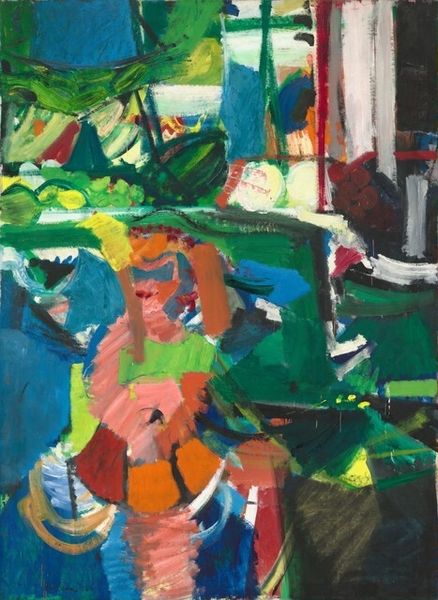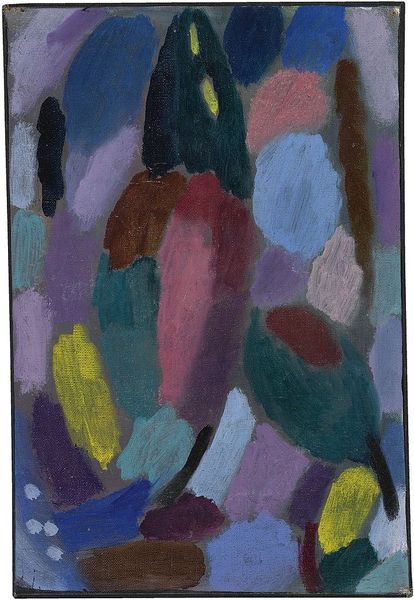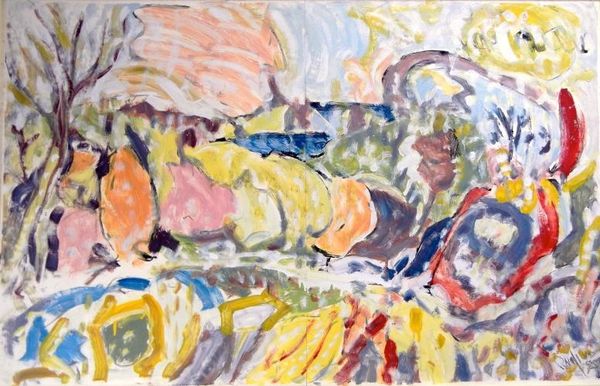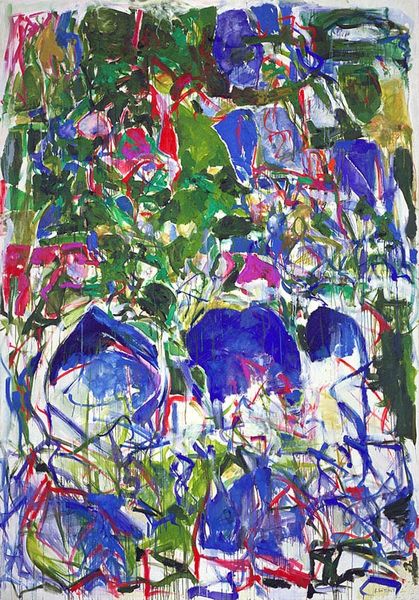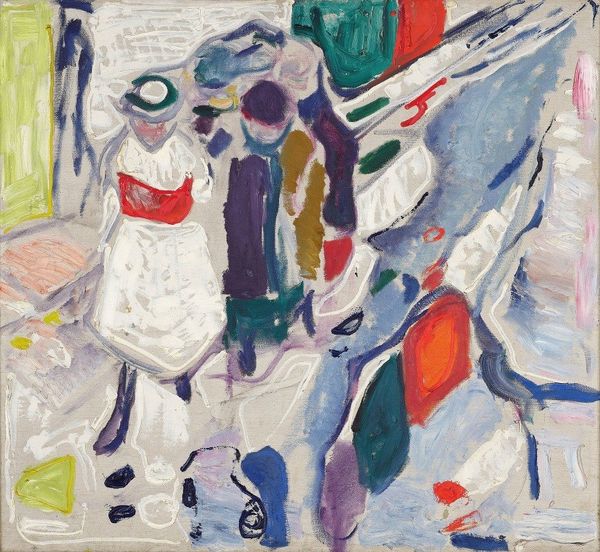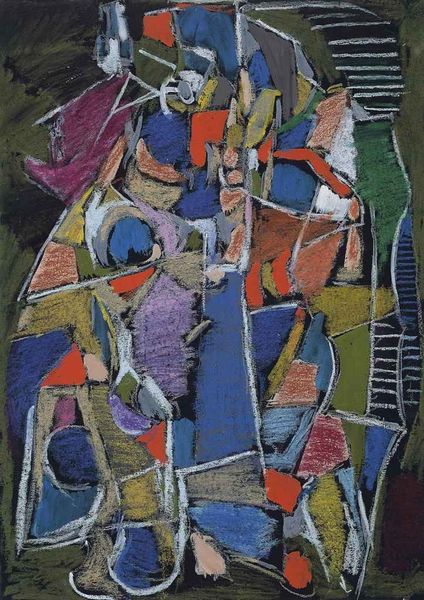
Copyright: Paul Guiragossian,Fair Use
Editor: This is Paul Guiragossian’s "Maternité au miroir," painted in 1987, with what looks like acrylic on canvas. It's a striking portrayal of motherhood. I see tenderness, but also almost a sense of fractured reality in the mirrored image. How do you interpret this work, especially its symbolic weight? Curator: Notice how Guiragossian returns again and again to the Madonna and Child motif, yet renders it in an expressionistic style. The mirror itself – what does it reflect? Perhaps not a literal image, but the fragmented emotional landscape of motherhood itself? It's less about direct representation and more about conveying profound inner experiences. Consider the role of the mirror as a symbol – throughout art history, what has it represented? Editor: Reflection, vanity, truth... Here, it feels more like introspection, a kind of multiplied self. I hadn’t really considered the mirror as reflecting something other than an image. Curator: Exactly! The abstracted forms and the Fauvist-like colors contribute to this emotional resonance. Look at how the faces are suggested, not fully defined. Is the emphasis on individuality, or the universality of this mother-child bond? These aren’t portraits but rather archetypes. Editor: I see it now. The vagueness actually opens it up to broader meaning – a reflection on every mother and child. Curator: Yes, and this universal theme links to deeply held cultural memories of care and nurture. Perhaps, this painting suggests that our understanding of maternity extends far beyond mere biology, connecting us all to profound aspects of human experience. It really underscores the potent ways images and symbols influence our perceptions. Editor: It definitely makes you think about the power that archetypes still hold. Thanks!
Comments
No comments
Be the first to comment and join the conversation on the ultimate creative platform.
